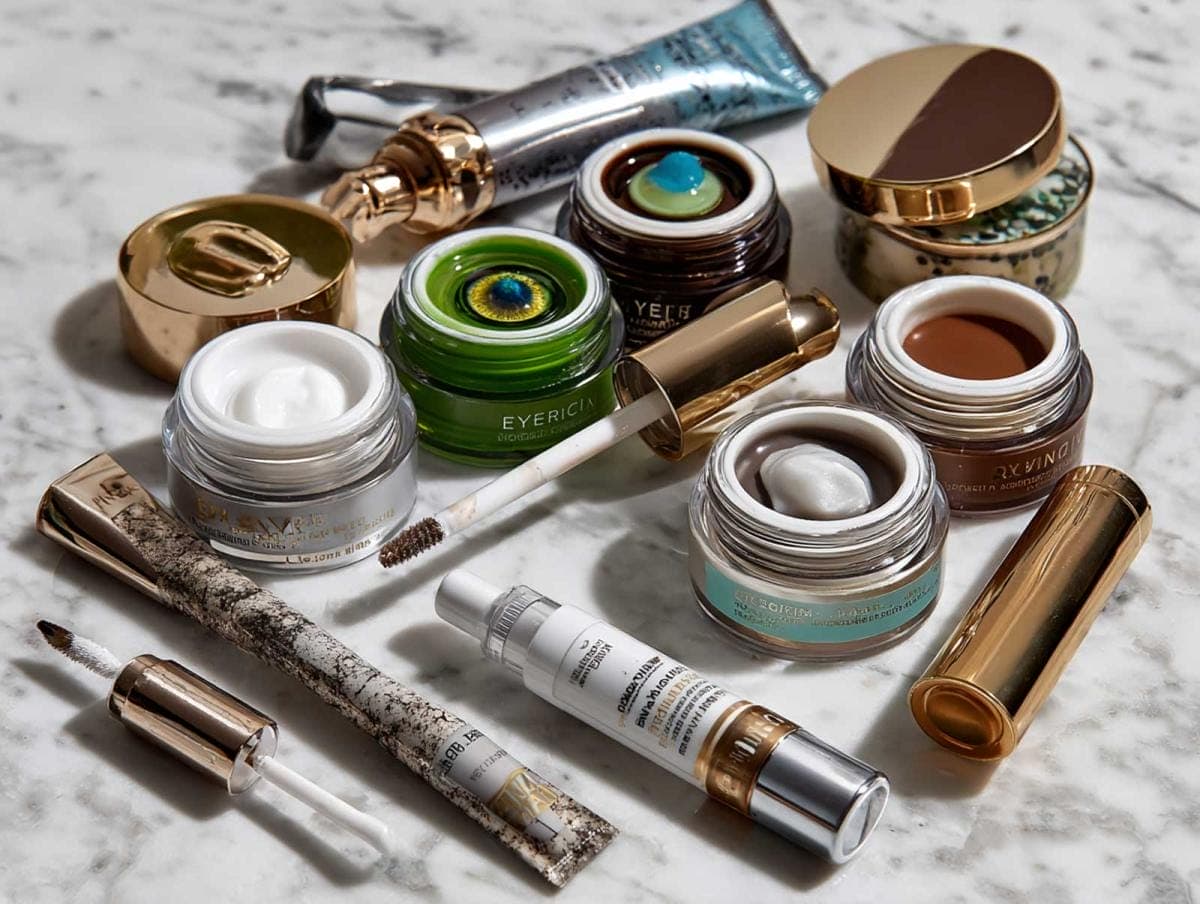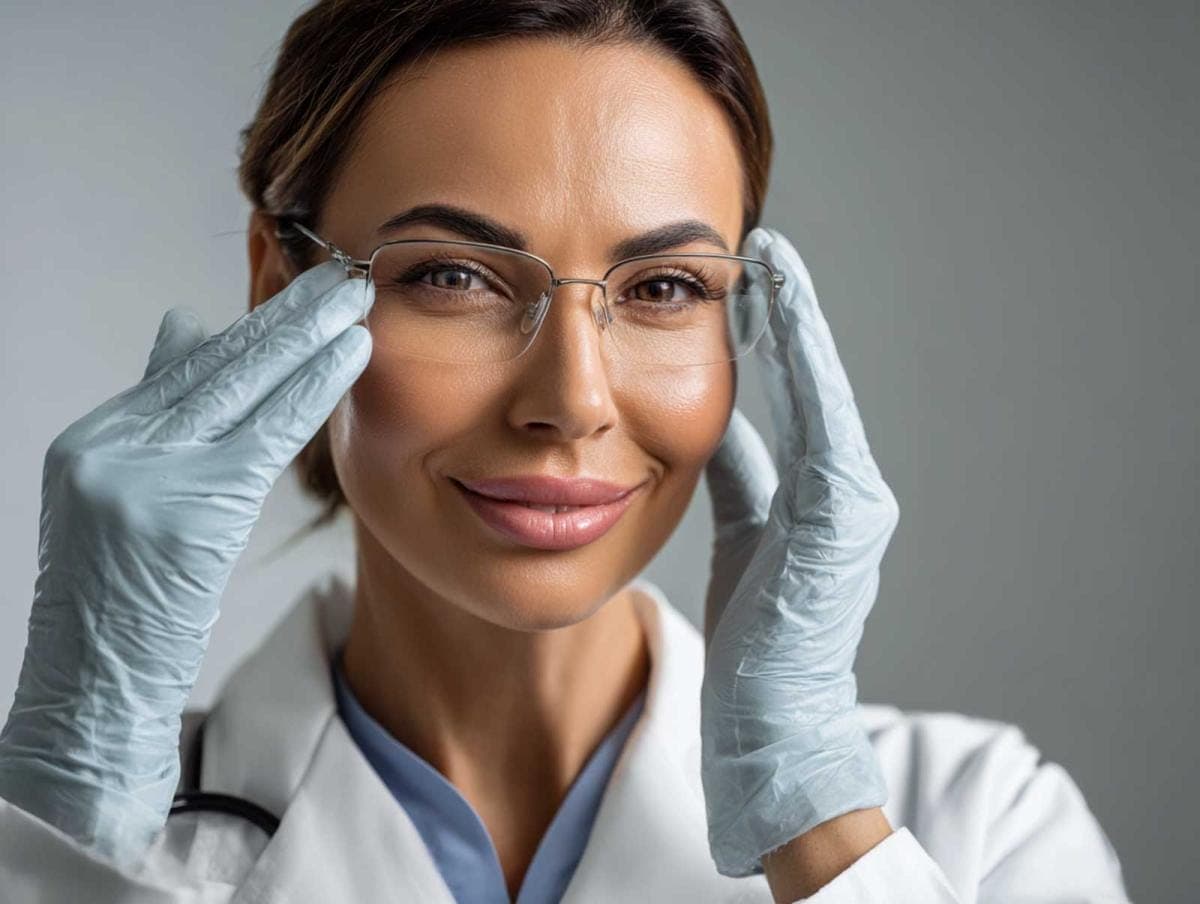Skincare
Are You Applying Your Eye Cream Wrong? Here’s How Dermatologists Do It
If you click on links we provide, we may receive compensation.
Most of us use eye cream. But very few of us are using it the right way. It’s easy to assume that if you’ve dabbed a little under your eyes, you’ve done your part. But technique matters more than you think. According to dermatologists, misusing eye creams is one of the most common mistakes they see among skincare users – especially when it comes to quantity, pressure, and placement.
Here’s how experts say you should be applying your eye cream, what you might be doing wrong, and why it all matters for keeping the delicate under-eye area healthy, hydrated, and youthful.
The Skin Around Your Eyes Is Different. Treat It That Way.
The eye area is thinner, drier, and more sensitive than the rest of your face. It also has fewer oil glands, which makes it more prone to dryness, crepiness, and fine lines. And because it’s constantly in motion – think blinking, squinting, smiling – this skin experiences more mechanical stress than other areas.
This is why so many eye creams are specially formulated with lighter textures and concentrated actives. But even the best product can fall short if you’re not applying it properly.
According to Dr. Marisa Garshick, a board-certified dermatologist in New York, “How you apply eye cream is just as important as what’s in it. You want to avoid tugging and stretching the skin and always use less product than you think you need.”
The Most Common Eye Cream Mistakes (You Might Be Doing One)
Even if you’ve been applying eye cream for years, it’s easy to develop habits that aren’t helping your skin. Here are the most common application errors dermatologists warn about:
Using too much
More is not better. A tiny amount – think half a pea for both eyes – is usually all you need. Applying too much doesn’t make the product work better, but it can lead to puffiness or clogged pores.
Applying too close to your eye
Eye creams should never go right up to your lower lash line or eyelids unless the formula is specifically designed for that. Most eye creams migrate slightly as they warm up on your skin, so placing them too close can cause irritation or even make your eyes water.
Rubbing instead of patting
Rubbing stretches the skin and can break down collagen over time. Always use your ring finger – it’s your weakest finger, so it applies the least pressure – and gently tap the product in.
Skipping morning or night use
Some people only apply at night. But many eye creams, especially those with caffeine or antioxidants, are meant for daytime use too. And hydrating the eye area before concealer helps prevent it from settling into fine lines.
Not tailoring product to concerns
Using the wrong eye cream can also waste your effort. Puffy eyes and dark circles need different ingredients than crow’s feet or sagging. Eye creams are not one-size-fits-all.

How Dermatologists Actually Apply Eye Cream (Step-by-Step)
Let’s get into how pros do it. Dermatologists follow a few consistent steps when it comes to applying eye cream effectively.
Step 1: Cleanse and dry your face
Apply eye cream to clean, dry skin. If your skin is damp or you’ve applied other products first, eye cream may not absorb as effectively. However, some pros apply it after serum but before moisturizer.
Step 2: Use the ring finger
Squeeze a small amount – about the size of a grain of rice per eye – onto your ring finger. Warm it up between both ring fingers to help it spread evenly.
Step 3: Dot in a semi-circle
Start at the inner corner of your under-eye and gently dot the product along your orbital bone, up toward the outer corner and along the top of the bone near your brow. Never apply directly to your eyelid unless the product says it’s safe for that area.
Step 4: Tap, don’t rub
Using that same ring finger, tap lightly to press the product in. Think of it like a soft piano tap, not a firm press. This technique helps the cream absorb without disturbing the skin.
Step 5: Wait before layering
Give it a minute to sink in before applying the rest of your skincare or makeup. If you apply foundation or concealer too soon, you risk pilling or interference with product absorption.

Pro Tips From Dermatologists You Might Not Know
Beyond the basic technique, dermatologists also offer some lesser-known tricks that make a difference.
Store eye cream in the fridge
Cool cream helps reduce puffiness and can feel extra soothing. This is especially helpful for formulas that contain caffeine or peptides.
Use a metal applicator if provided
Some eye creams come with metal-tip applicators that help massage and cool the area. These aren’t just gimmicks – they can boost circulation and reduce puffiness.
Use your eye cream on smile lines
Some derms say eye cream can double as a treatment for nasolabial folds or lip lines, since it’s gentle and usually packed with actives.
Don’t forget sunscreen on top
Most eye creams don’t contain SPF. Even if you apply eye cream in the morning, you still need to layer sunscreen over the area or use a dedicated SPF eye cream.
Choosing the Right Eye Cream for Your Concern
Here’s where many people go wrong: using an eye cream that doesn’t target their actual need. Ingredients matter. Here’s how dermatologists typically break it down:
For puffiness and swelling
Look for caffeine, green tea extract, or peptides that improve microcirculation and reduce fluid retention. Cooling applicators can help, too.
For dark circles
Vitamin C, niacinamide, licorice root, and kojic acid can help brighten pigmentation-based dark circles. Just don’t expect miracles overnight – it takes time.
For fine lines and wrinkles
Go for retinol (in gentle concentrations), bakuchiol, peptides, and hyaluronic acid. These support collagen and improve elasticity.
For dry or crepey skin
Ceramides, squalane, hyaluronic acid, and shea butter are hydrating heroes. You need moisture to plump and soften thin skin.
For sensitive eyes
Stick with fragrance-free, hypoallergenic formulas. Thermal spring water, oat extract, and panthenol are good for calming irritation.
Morning vs. Night: When Should You Apply?
Some eye creams are formulated specifically for morning use – usually those with caffeine or illuminating effects. These help reduce puffiness and make you look more awake. Others are better at night – especially those with retinol or rich moisturizers. Nighttime is ideal for repair and recovery, so if you’re targeting signs of aging, that’s your go-to window.
But if your skin can tolerate it, dermatologists often recommend using eye cream twice a day for maximum benefit. Just make sure you’re not doubling up on active ingredients like retinol or exfoliants, which can irritate the delicate eye area if overused.
How Long Until You See Results?
Here’s the truth: eye creams don’t work overnight. They’re not Botox in a bottle. Most dermatologists say it takes about 6 to 8 weeks to notice a difference with consistent use. This is especially true for creams targeting dark circles or fine lines, which are more about long-term improvement than instant effects.
That said, some formulas – especially those with caffeine or reflective pigments – can give you a temporary “awake” look in minutes. But lasting change takes patience and consistency.
Can You Skip Eye Cream Altogether?
Some skincare experts argue that a well-formulated facial moisturizer can double as an eye cream. It’s true – if your face cream is gentle and doesn’t contain strong actives like high-dose retinol, it may be fine.
But many dermatologists still recommend using a separate product for the eye area, especially if you have specific concerns like dark circles, puffiness, or lines. Eye creams are often lighter in texture, more targeted, and designed not to migrate or irritate.
If budget is an issue, look for multi-tasking serums or creams with dual benefits. But if your eye area is dry, irritated, or showing signs of aging, dedicated eye care is worth the extra step.
Bottom Line: Don’t Just Slap It On
If you’re going to invest in an eye cream, make sure you’re not wasting it with poor technique. Apply with care, be consistent, and match your formula to your needs.
And don’t forget – the skin around your eyes is usually the first to show signs of stress, fatigue, and age. That’s why dermatologists treat it with extra respect. It’s not just about looking good. It’s about preserving your skin’s health and resilience over time.
FAQs
Do I need an eye cream in my 20s?
You don’t need one, but starting early with a gentle, hydrating formula can help prevent future issues. Look for ingredients like hyaluronic acid or niacinamide.
Can I use retinol eye cream every day?
Yes, but start slowly – 2 to 3 times a week at first – and build up as tolerated. If you notice irritation, scale back.
Should I apply eye cream before or after moisturizer?
Most dermatologists recommend applying eye cream before heavier moisturizers, so it absorbs better and isn’t blocked by occlusive layers.
What’s the best drugstore eye cream?
CeraVe Eye Repair Cream and Neutrogena Hydro Boost Eye Gel-Cream are popular dermatologist picks for hydration at a lower price point.
Is it okay to layer two eye creams?
Only if they’re complementary. For example, a caffeine-based gel in the morning and a peptide-rich cream at night. Don’t overdo actives.




